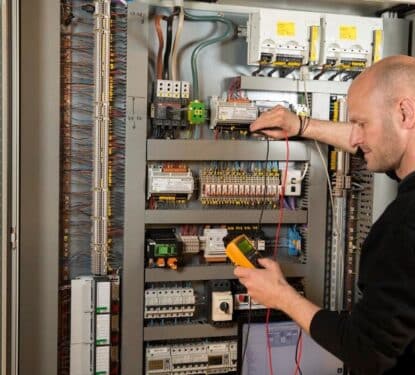“Human-centric lighting” has been around for five years or more but its definition is still unclear. The term itself is a bit of a misnomer in the sense that most lighting has been focused on humans, long before lighting even became electric. Like “smart,” “intelligent,” and other technology buzzwords of our time, human-centric has emerged to describe a new set of technological applications. For lighting, human-centric technology goes beyond illumination to open up a world of new possibilities for the sector.
Human-centric lighting (HCL) represents a paradigm shift for the lighting industry. One that goes from lighting for space to lighting for people. Lighting will always be used to illuminate space but developments have shown that by manipulating the color, hue, and brightness of luminaires, the light produced can improve the health and wellbeing of building occupants.
More recently, studies have shown that lighting can also have a significant impact on concentration, creativity, collaboration, and ultimately productivity, which has accelerated its adoption in commercial real estate.
The emergence of human-centric lighting was triggered by two key developments. The first was the discovery of non-visual photo-receptors in the eye, meaning the eyes are for more than just enabling sight. Subsequent research found that these non-visual receptors are fundamental to regulating the human circadian system, and impacting the biological clock of workers, as well as their mood and alertness.
Millions of years of evolution have tuned humans, and other animals, to the natural rhythms of the sun - bluer light in the morning, whiter midday light and increasingly warm red tones as we approach sunset - but artificial light changed all that by giving us white light all the time. This has resulted in widespread sleep issues, poor concentration levels, and a range of other issues that impact our health and productivity. By mimicking natural light, artificial light sources can realign occupant biology to bring about these benefits for people who spend much of their day indoors.
Ongoing research continues to develop the growing body of evidence surrounding the beneficial effects of light, on vitality, depressive symptoms, alertness, sustained-attention span, and task performance, as well as awareness and sleep quality. Furthermore, bright-light exposure appears to be effective at improving health-related quality of life and alleviating distress. All of these factors have a direct and substantial impact on productivity and are therefore of great interest to commercial real estate and the businesses that reside within them.
Follow to get the Latest News & Analysis about Smart Buildings in your Inbox!
The second key development is our ongong transition from incandescent bulbs to light emitting diodes (LED). While the primary drivers for this transition have been energy efficiency and low maintenance, LEDs offer much greater ability to manipulate color, brightness, hue, and so on. In line with the research on the biological impacts of light, LEDs have facilitated the emergence of HCL in a way that incandescent bulbs never could.

“We are now able to control light and what kind of colors or frequencies they give out. This allows us to work with human’s natural circadian rhythms. Since we spend so much of our day inside, can we bring the natural progression of light indoors?” asks David Kaminski, Marketing Campaign Manager at GE Lighting. “We need blue light in the morning and cool yellow light to wind down toward the end of the day. We are seeing light that does more than turn on and off, but can make more comfortable environments,” he continued.
HCL is not limited to LEDs and electric light bulbs, however, natural light has proven in study after study to be the best kind of illumination for health and productivity. Office workers who sit near windows receive 173% more white light exposure during work hours, which leads to an average of 46 minutes more sleep per night than employees who do not have the natural light exposure in the workplace. Workers without windows reported poorer scores than their counterparts on quality of life measures related to physical problems and vitality, as well as poorer outcomes on measures of overall sleep quality.
In a 2017 Memoori workplace survey, natural light emeged as the best type of illumination for the office. “It is perhaps unsurprising that abundant natural light had the biggest contrast, with more than six times as many respondents believing natural light aided concentration than those who didn’t. Conditioned by evolution to respond to the tones and rhythms of sunlight, natural light is the ideal form of light to benefit employee concentration and therefore productivity,” explains the accompanying report: The Future Workplace: Smart Office Design in the IoT Era.
The current revolution in lighting is not about simple illumination, nor efficiency or even LEDs. The new world of lighting is about people. Before new lighting systems are installed, businesses should focus on increasing the levels of natural light in the workplace using windows or better office layout.
When natural light is not possible, LEDs offer the perfect alternative. Efficiency is, of course, a benefit through cost-saving and environmental responsibility. However, by better supporting the worker, enterprises can bring about so much more value through worker health, focus, collaboration, and ultimately productivity. That’s why the future of lighting is human-centric.



